‘It is a beautiful place, she thinks, yet somehow an inhospitable one. It’s a place of secrets, one that has seen too much and concealed too much to be at peace with itself.’
– Kate Mosse, Labyrinth
Languedoc in the south of France is a bloody mysterious place. Next door to much better-known Provence, not many people seem to think of visiting it. But if Provence is peppy & popular, then Languedoc is the dark and mysterious neighbour next door. Intriguing.
We ourselves were keen to go ever since Lonely Planet named it one of their top regions in the world to visit. So we set out to explore in our usual way, hiking over 280km of it in three weeks.
And it’s a place of secrets indeed.
Here’s the secrets we can divulge about visiting Languedoc:
1. It has hills, mountains and coast all in one
Languedoc is in a quite stupendous part of the world. Edging away from the Mediterranean Sea it backs straight into the craggy French Pyrenees mountains. So it’s a rocky sort of place (a mix of limestone, granite and gneiss) where most of its villages, towns and cities are clinging to cliff-edges in the most precarious and exciting of ways.
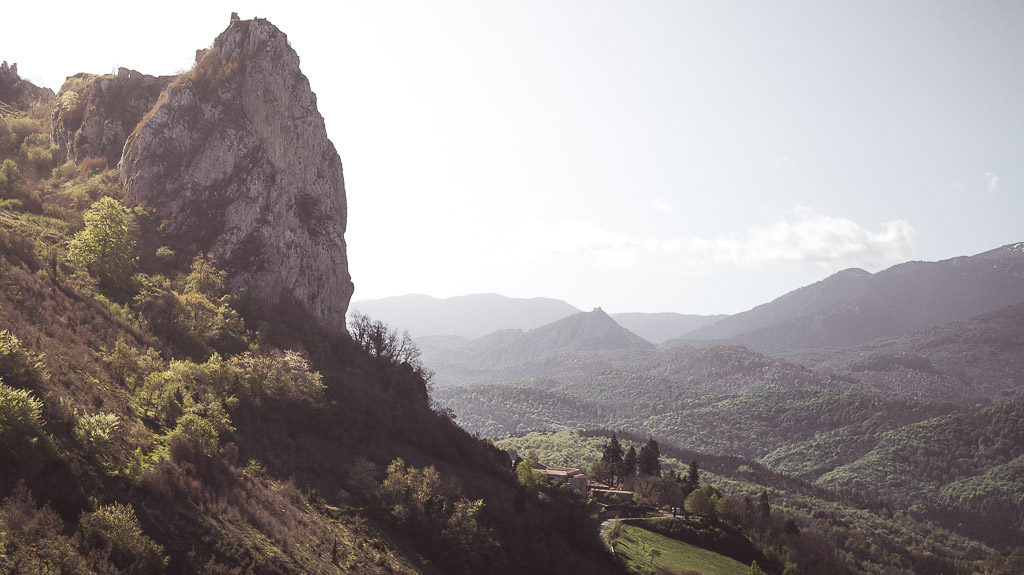
And that means amazingly you could visit vineyards, ski slopes and beaches all within a day of each other, if you wanted.
2. The history is incredible – and disturbing
One thousand years ago Languedoc was a liberal and fiercely independent state – definitely not part of France. The powerful lords of the south allowed different religious and cultural practices to flourish, including the Christian branch we now call the Cathars. Let’s not go into it, but the Catholic Church didn’t like them so much, and launched one of those old knights-and-armour Crusades against them in the thirteenth century.
What followed was a drawn-out blood bath. The huge castles owned by the southern nobles became stoutly defended fortresses, offering refuge to the threatened Cathars; it was ultimately to no avail though as several horrific exterminations were carried out. Sieges, battles and burnings ripped the region apart for fifty years.
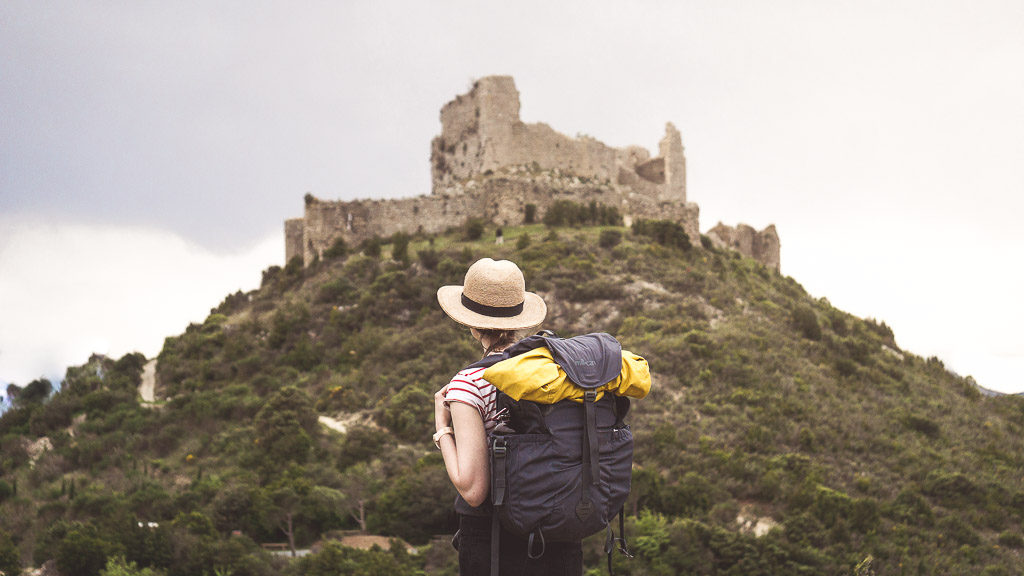
The upshot was eventually the complete loss of Languedoc independence, and the whole area was subsumed into France. It’s all quite heavy – but utterly fascinating, and there are a thousand remnants of it to see and explore today.
3. It has a fairytale city
Not least of these historical remnants is the city of Carcassonne. It’s a remarkable place, and its conical turrets, fluttering flags and lofty battlements might have sprung from the pages of Sleeping Beauty. It gets torturously busy in the summer season, but somehow still retains some of its magical mystery.
4. It has tens of medieval castles
Visiting Languedoc today you can still see and walk around many of the medieval/’Cathar’ castles. Stuck up high on mountains, some seem impossible to even get to -let alone attack- and we found them all scarily atmospheric in their own way.
We visited 9 of the best known, our favourites being: Queribus, Puilaurens, Monstegur and Roquefixade.
Why did we visit 9, you might ask? Well…
5. Languedoc has its own long-distance trail
Of course it does, or else why would we be there? It’s how we discovered Languedoc and in our opinion it’s the best way to explore the region.
The Cathar Way (or Sentier Cathar in French) is a 260km hike from the Med to the city of Foix, and yes it goes via the 9 best-known and most impressive medieval castles.
Read more: accommodation on the Cathar Way
The walking is hilly, remote and dramatic. If you want a taste of this walk without doing the whole thing though, we’d recommend:
- 1 day: Roquefixade to Foix
The final day of the Cathar Way is probably the best. A beautiful walk high up the mountains with the castle of Montsegur far behind, and the whole valley below.
- 3 days: Quirbajou to Montsegur
Mountain-scaling, gorge walking and the highest point of the whole trail (1500m), these 3 days are remote and really rewarding. Plus you end at perhaps the most impressive Cathar Castle of them all, Montsegur.
- 5 days: Tuchan to Puivert
6 castles in 5 days – need we say more?
6. In fact, walking might well one of the best ways of actually getting around
Other than hiring a car, walking from place-to-place is really the way to get around when you’re visiting the Languedoc. There are a few bus routes but they’re pretty sporadic, and the train only gets you to the bigger places: Beziers, Carcassonne, Toulouse (all of which have international airports too to get into Languedoc in the first place).
And don’t get us started about taxis, which will ironically only want to go to certain places at certain times.
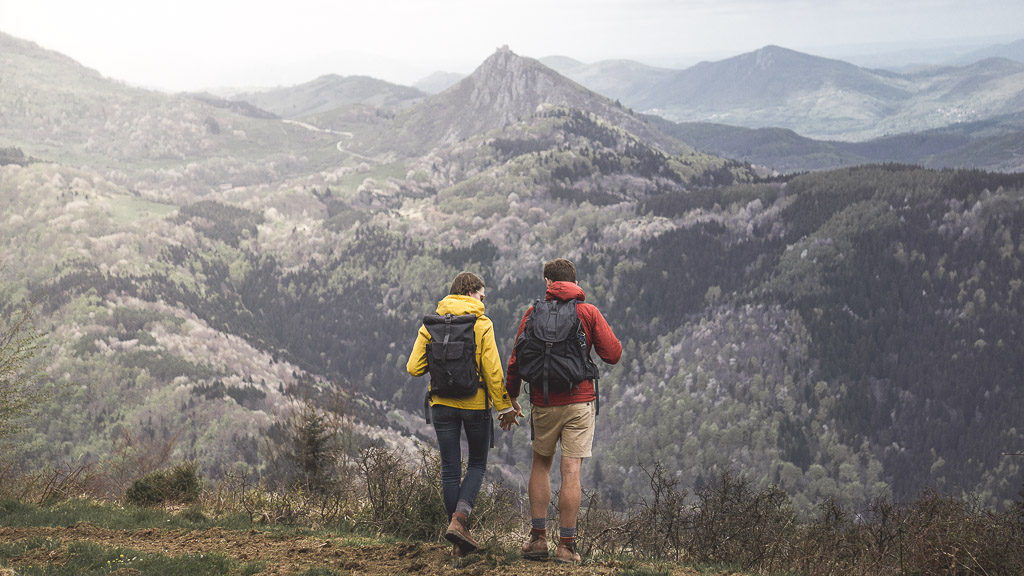
Walking however gave us the freedom and opportunity to see places at our own pace, and explore villages, mountains and forests we would never in a million years have known were there.
7. There’s a series of international bestselling books about it
We started this post with a quote by British author Kate Mosse. It’s from her book Labyrinth, the first in a series of phenomenally successful historical mystery novels about Languedoc and its Crusade. They’re set partly in the modern day, partly in the thirteenth century, the timeframes linked together by magic, history and intrigue. Seriously go read them, they’re addictive.
What else do you want to know about visiting Languedoc?
Pin it:
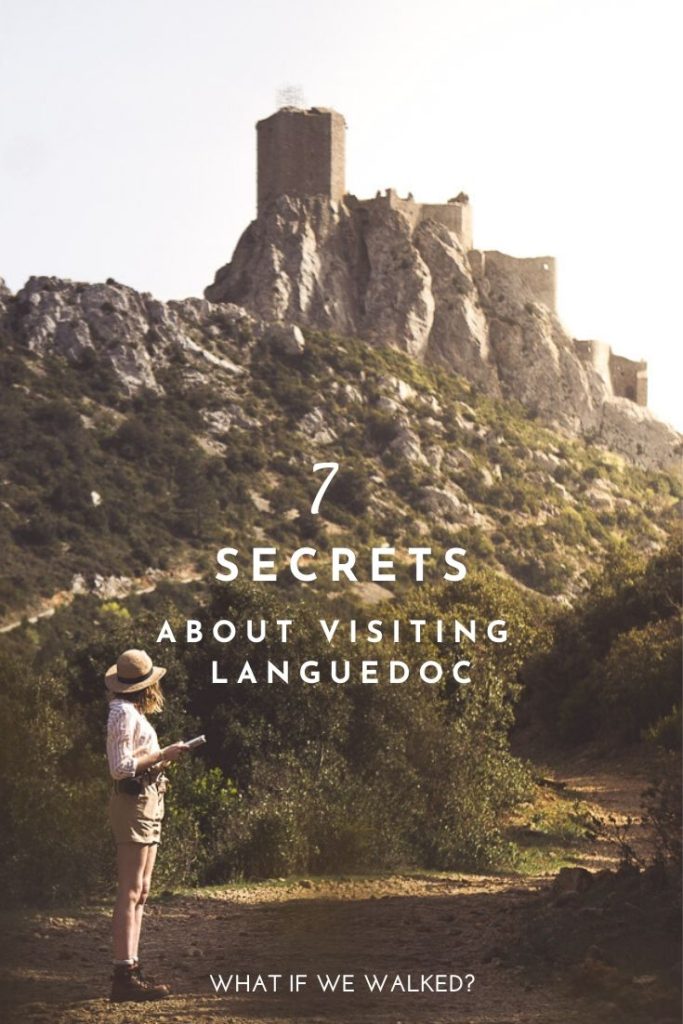

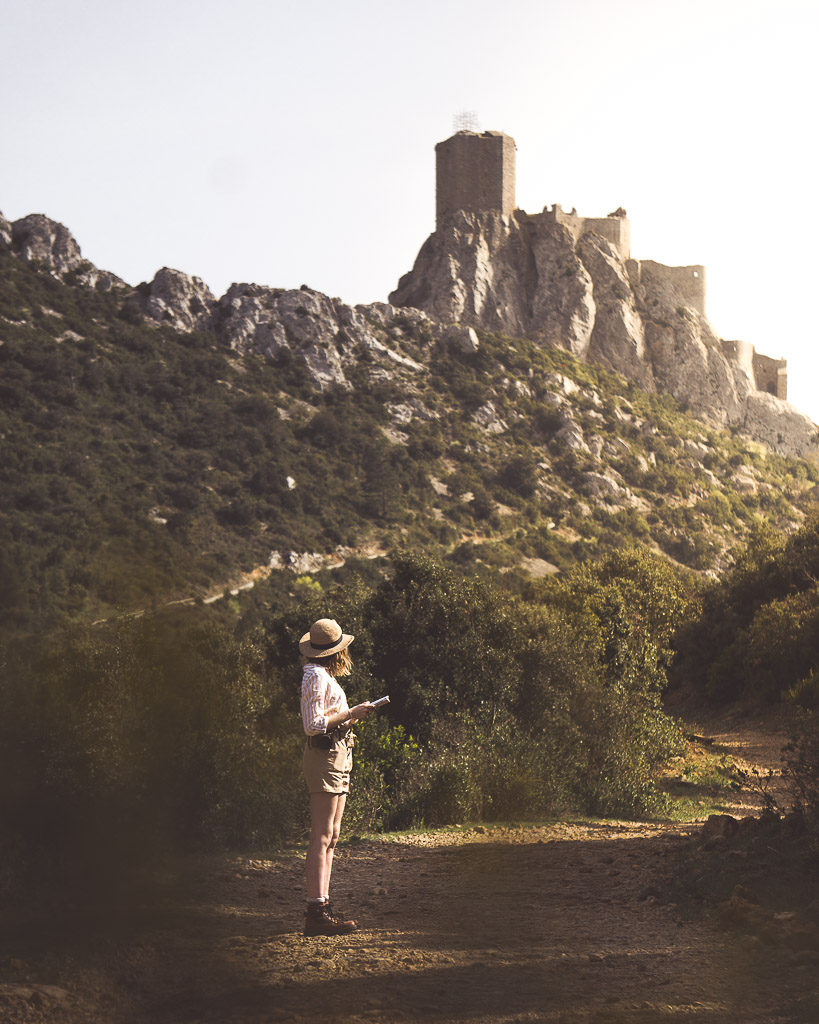
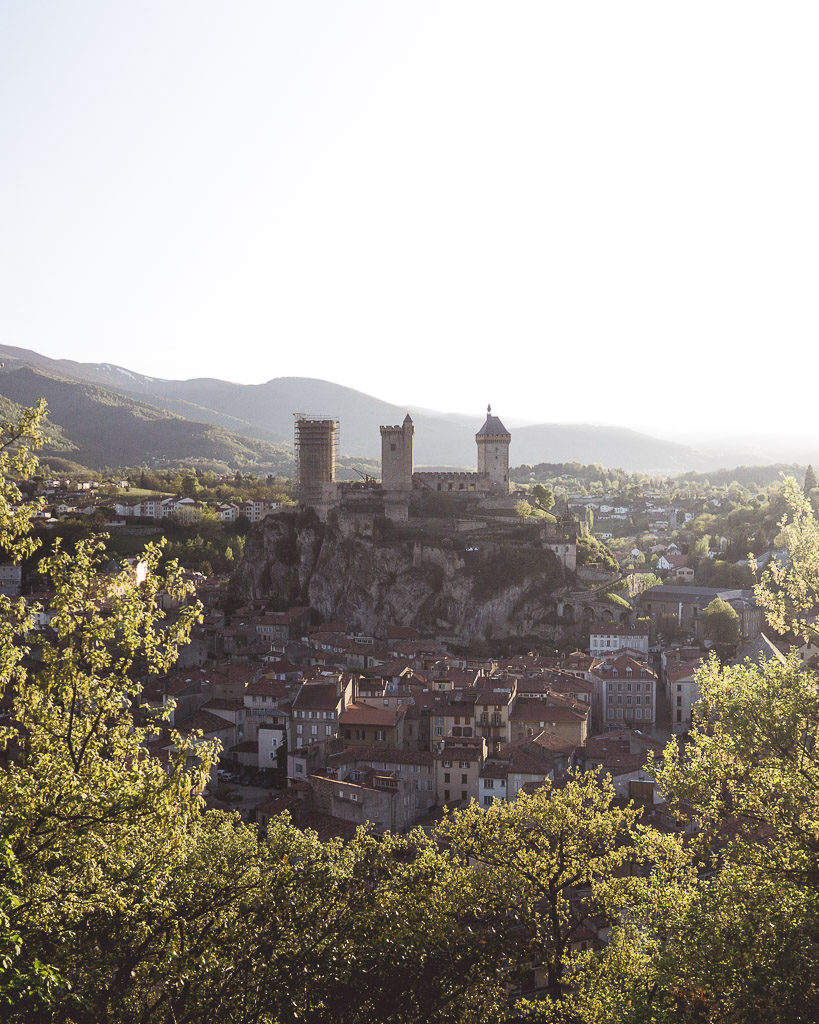
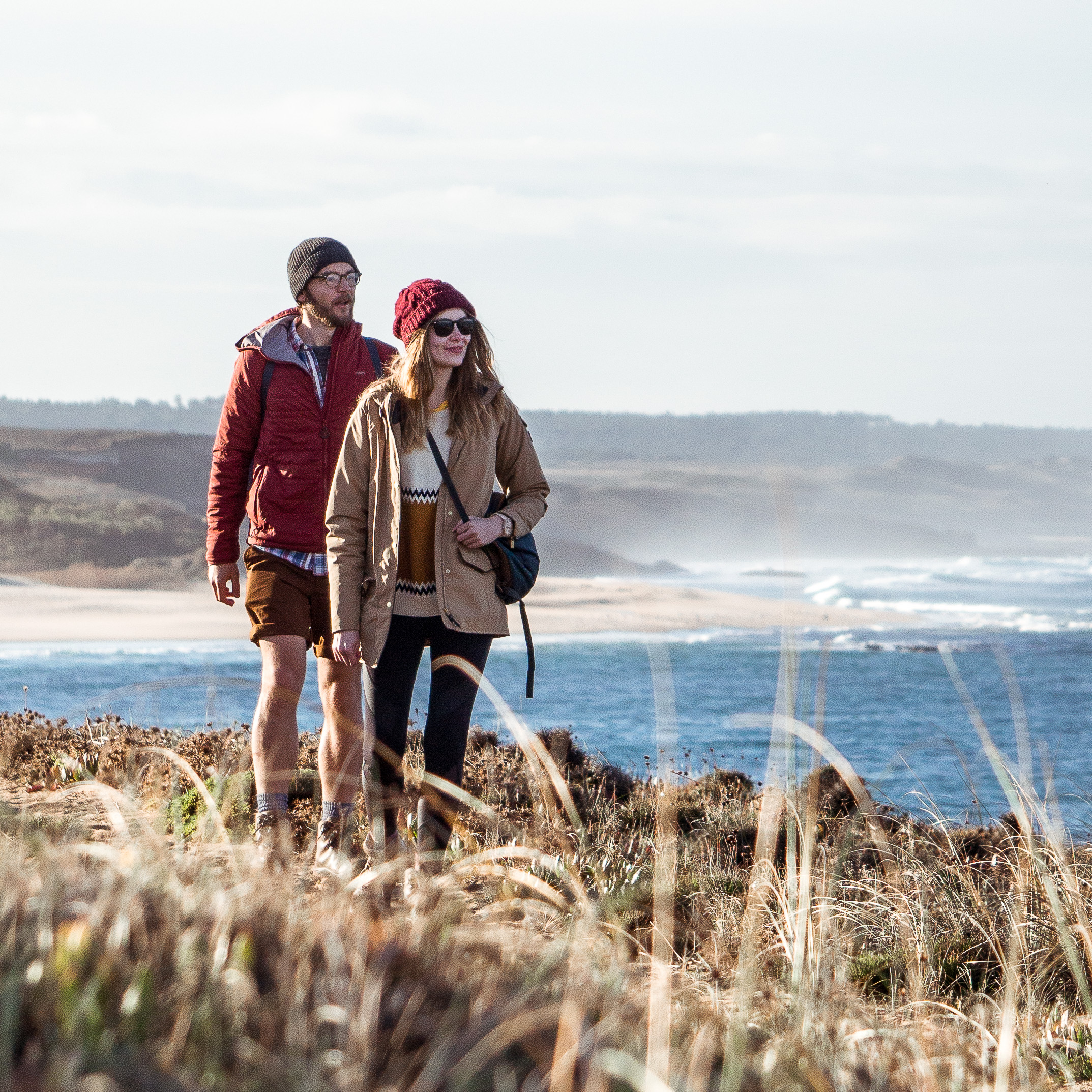
Hello,
I’m happy to discover your web site. It’s very amazing.
If you want picture of my guest house “L’oustal dé l’Annetta”, to put on your “Accomodation on the Cathar Way”, you can take picture on my web site.
You were very good guests.
Thank you very much.
Best wishes.
Ghislaine
Hi Ghislaine, thanks for your comment. We enjoyed our stay with you – we were very tired I seem to remember!
We’ll be walking parts of the route again in October. Hope you’ve had a good summer season.
Best wishes,
Luke